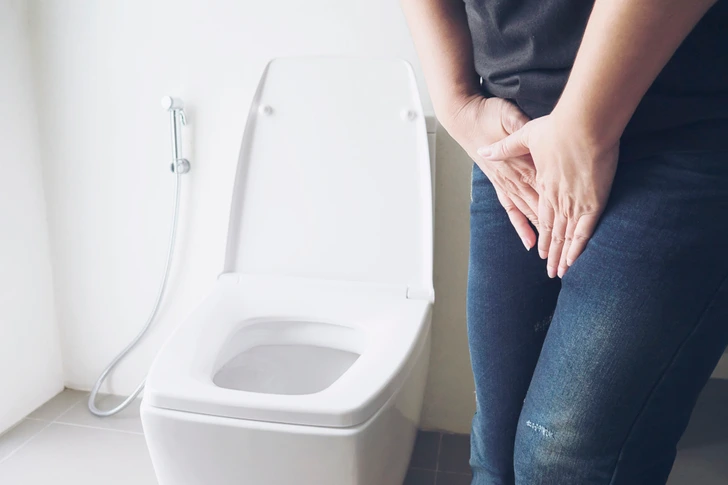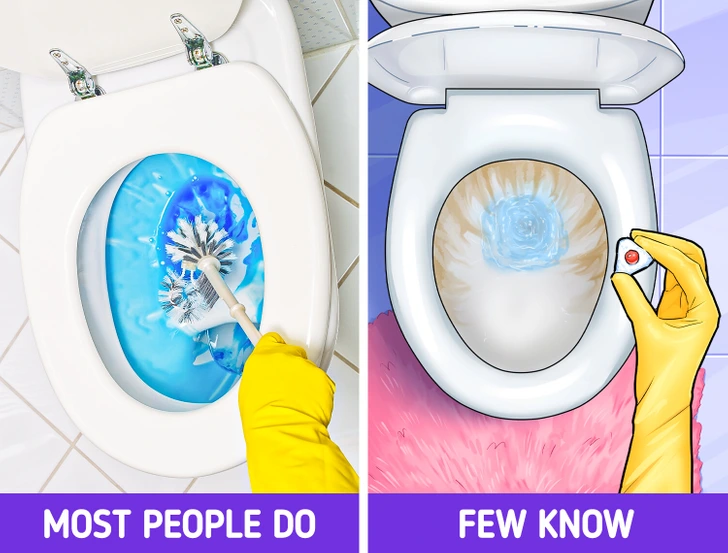We all have our own rituals when using public restrooms—wiping down the toilet seat, hovering instead of sitting, or even carrying disinfectant wipes in our bags. But a recent study has shed light on a surprising truth: we may be flushing toilets completely wrong, and some of our trusted habits may not be as effective at preventing the spread of germs as we once thought.

The research, conducted by scientists from the University of Arizona in partnership with Reckitt Benckiser LLC, was published in the American Journal of Infection Control. The goal? To uncover what actually happens when we flush—and whether closing the lid really makes a difference.
The Experiment That Challenged Everything
To explore the role of toilet lids in stopping germ spread, researchers used toilets in both home and public bathroom settings. They introduced surrogate bacteria (designed to mimic human enteric viruses—commonly spread through the fecal-oral route) into the water, simulating the kind of contamination that might occur after someone with a stomach virus uses the toilet.
Video:
Video shows how far germs travel when flushing toilet
Then, they flushed the toilets both with the lid open and lid closed, comparing the level of contamination that occurred afterward.
What the Results Showed Might Surprise You
The findings were unexpected: Closing the lid didn’t significantly stop the spread of bacteria.
That’s right—even with the lid shut, germs still found their way onto surrounding surfaces. The so-called “toilet plume”—a burst of microscopic particles launched into the air with every flush—seems to escape either way.
However, there was one practice that did drastically reduce contamination: disinfecting the toilet bowl. Using a strong toilet cleaner cut down bacteria by an incredible 98%.
The Science of the Toilet Plume

Every time you flush, the rushing water stirs up aerosolized particles—tiny droplets invisible to the naked eye. These can carry germs up to five feet away, landing on nearby surfaces like:
- Bathroom sinks
- Floors
- Toilet handles
- Even toothbrush holders
If someone with a virus uses the toilet, those germ particles can easily find their way onto high-touch areas, potentially infecting others long after they leave.
This is where the “toilet plume” becomes a real concern—not just in public bathrooms, but in our own homes.
So, How Do You Really Keep Bathrooms Germ-Free?
Let’s get one thing straight: disinfecting is your best defense. While closing the lid may still reduce some droplet dispersion, it’s not a cure-all. To maintain a truly hygienic space, you need to clean and disinfect regularly—and properly.
Disinfecting Tips That Actually Work

- Clean first, then disinfect. Start by wiping surfaces with soap and water to remove dirt. Follow up with a disinfectant to kill lingering germs.
- Use EPA-registered disinfectants or prepare your own bleach solution (follow proper dilution instructions).
- Focus on high-touch areas: toilet handles, flush buttons, seat lids, faucet handles, and light switches.
- Keep the bathroom ventilated to avoid inhaling chemical fumes while cleaning.
How Often Should You Disinfect Your Bathroom?
Experts recommend a full disinfection twice per week under normal circumstances. But if someone in the household is sick—especially with gastrointestinal illness—increase that to twice per day.
Dr. Charles P. Gerba, a professor of virology at the University of Arizona, emphasizes the importance of wiping the toilet seat and handle regularly:
“These areas are frequently contaminated after flushing. Disinfecting them often is essential for maintaining a clean environment.”
Proper Disinfection: Step-by-Step

Before You Disinfect:
- Read product labels to ensure correct use and safe disposal.
- Wear protective gear like gloves and safety glasses to avoid skin or eye exposure.
- Make sure there’s good airflow if you’re working in a small space.
While Disinfecting:
- Allow proper contact time. Disinfectants need time to sit on surfaces to be fully effective—check your product’s label.
- If dilution is required, use room temperature water (unless otherwise noted).
- Never mix cleaning products, and don’t use them on pets or skin.
Video:
What happens when you don’t put the lid down when you flush
After Disinfecting:
- Wash your hands with soap and water for at least 20 seconds.
- Store chemicals securely—away from children and pets.
Myth-Busting: Common Hygiene Habits That May Not Help
Here are a few restroom habits that many of us follow, but may not be as effective as we think:
- Wiping the toilet seat only: This helps with visible dirt, but doesn’t kill bacteria unless you’re using a disinfecting wipe.
- Hovering over the seat: Can actually result in more mess and germ spread on surrounding surfaces.
- Using toilet paper as a barrier: Offers little protection if the seat isn’t sanitized.
Instead, carrying a small pack of disinfecting wipes or using a spray sanitizer on public toilet seats is a better way to reduce germ exposure.
Additional Hygiene Tips for Home Bathrooms

To keep your bathroom cleaner between deep disinfecting sessions, try incorporating these everyday habits:
- Keep toothbrushes stored inside a cabinet or covered.
- Close the toilet lid before flushing to reduce spray—even if it’s not foolproof.
- Wash hands thoroughly after each bathroom visit.
- Launder towels and bath mats weekly, especially if multiple people are using the same bathroom.
Final Thoughts: A Cleaner Bathroom Starts With the Right Habits
The big takeaway from this study is simple: flushing alone won’t stop germs from spreading, whether the lid is up or down. While it’s still good practice to close the lid, the best line of defense is routine cleaning and disinfection.
The next time you reach for a bottle of cleaner, remember—you’re not just tidying up. You’re protecting your health and your family from the invisible threats we can’t see, but definitely don’t want to spread.
If you’re looking for peace of mind in your bathroom routine, forget the myths. Disinfect regularly, clean properly, and stay informed.


